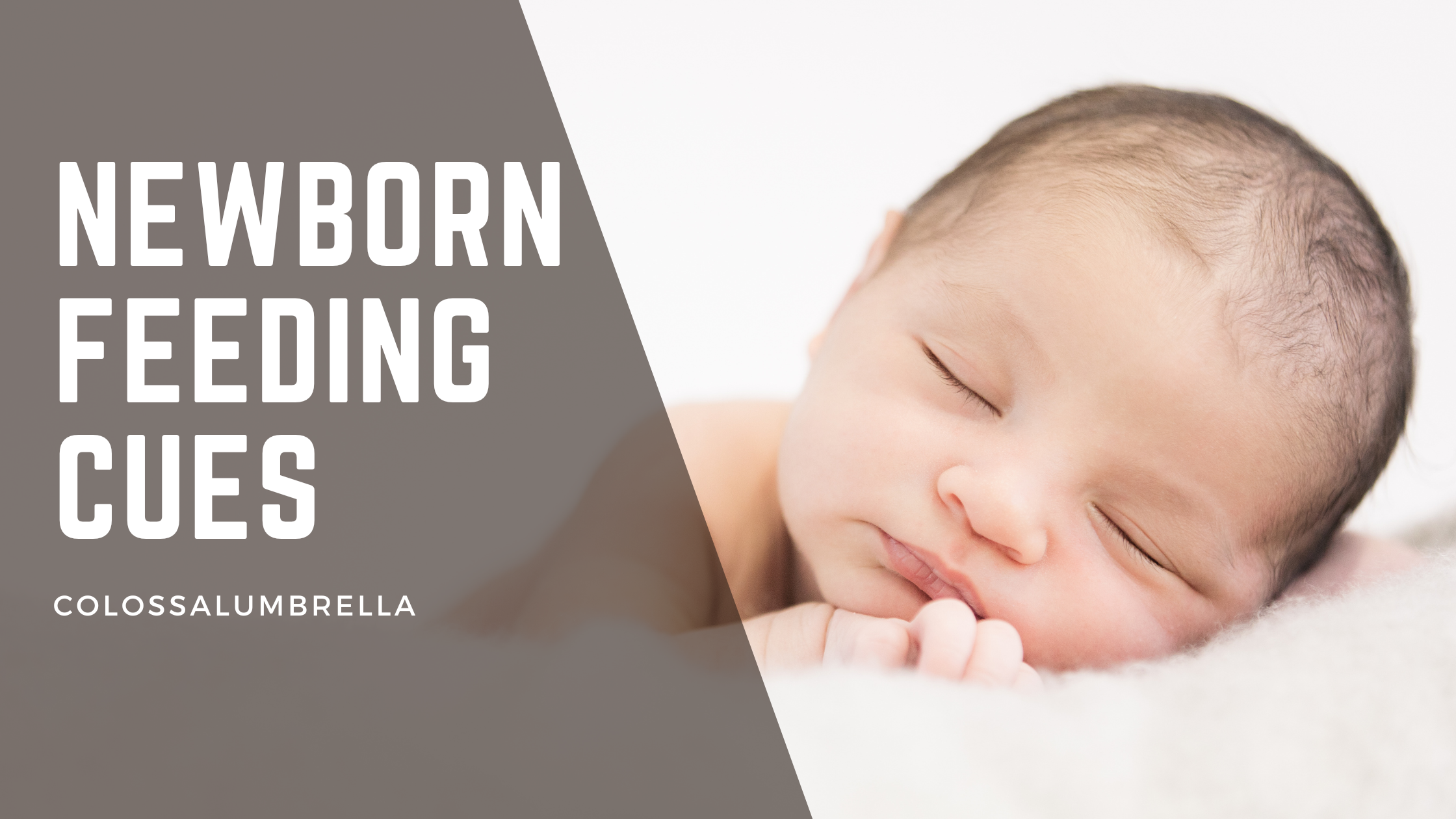Contents
One thing that can make the early days of parenthood even more challenging is figuring out when and how to feed your little one. As a new parent, you might be wondering, “How often should I feed my baby?” or “How do I know when they’re hungry?” You don’t need a crystal ball or a degree in rocket science to figure it out. All you need to do is learn how to recognize your newborn feeding cues.
Now, I know what you’re thinking. “Feeding cues? What the heck are those?” Well, they’re signs that your baby gives you when they’re hungry, full, or just need a little cuddle. Babies can be pretty darn subtle about it. It’s not like they can just say, “Excuse me, Mother, I believe I am in need of sustenance at this moment.”
No, instead they might root around like a little piglet, suck on their fists, or give you the stink-eye until you realize what they need. Once you learn how to read your baby’s feeding cues, it’ll all become second nature.
What are Newborn feeding cues?
So what are feeding cues? Feeding cues are those adorable little signals that let you know your newborn is hungry and ready for their next meal. When you’re a sleep-deprived new parent, trying to decipher these cues can feel like trying to crack the Da Vinci Code.
It’s like your baby is playing a game of charades, and you’re the one who has to guess what they’re trying to tell you. “Okay, let me see…you’re rooting around like a little piglet, smacking your lips, and flailing your arms. I’m going to guess you want some milk?”
It is important to learn how to recognize your baby feeding cues. As one wise mom once said, “If you wait for a baby to cry, you’ve waited too long.” So, let us break down some common feeding cues and what they might mean.
First up, we’ve got rooting. It’s like your baby is a little GPS system, and they’re pointing you straight to the source. “Breast or bottle, this way please!” And if you’re not fast enough, they might just start headbutting you for emphasis.
Then there’s the classic lip-smacking. It’s like your baby is saying, “Mmm, I can practically taste that sweet, sweet milk already.” And if you’re lucky, they might even throw in a little drool for good measure.
Sometimes it is not so easy to tell if your baby is hungry or just…being a baby. They might be fussing and crying for seemingly no reason, and you’re left scratching your head. But if you’ve ruled out a dirty diaper or a need for snuggles, it’s probably safe to assume they’re ready to eat.
Recognizing Your Baby’s Feeding Cues

As a new parent, recognizing your baby feeding cues can be a little daunting at first. But fear not! With a little practice and patience, you’ll soon become a pro at understanding your baby’s needs.
Let’s start with the basics. One of the most common feeding cues is rooting. This is when your baby turns their head and opens their mouth, searching for something to suck on. It’s like a tiny little treasure hunt, and you’re the treasure. Go ahead and offer the breast or bottle, and watch your baby’s face light up with delight.
Another sign that your baby is ready to eat is lip smacking or licking. It’s like they’re already savoring the taste of that delicious milk. And if you’re lucky, they might even let out a little sigh of contentment.
Some babies may also suck on their hands or fingers when they’re hungry. It’s like they’re practicing for the real deal. And if they’re really hungry, they might even try to suck on your nose or ear. (Hey, whatever works, right?)
But what about when your baby is full? How do you know when it’s time to put the boob or bottle away? Look for signs of satisfaction, like slowing down their sucking, turning away from the breast or bottle, or even falling asleep.
On the other hand, if your baby is fussing or crying, they might still be hungry. This can be a bit confusing, but remember that crying is often a late sign of hunger. Try to offer the breast or bottle before your baby reaches this point.
Of course, every baby is different, and their feeding cues may not always be crystal clear. But with time and practice, you’ll soon be able to read your baby like a book. And who knows, maybe you’ll even become a baby whisperer.
Subscribe to my blog for Parenting tips that will make you feel like a pro, and get access to exclusive free Printables that will keep your little ones busy and happy!
Responding to Your Baby Feeding Cues
Now that you’ve learned how to recognize your baby feeding cues, it’s time to talk about how to respond to them. This is where the real magic happens!
When your baby gives you the signal that they’re hungry, it’s important to respond quickly. A hungry baby is not a patient baby, as any sleep-deprived parent can attest to. So, if you’re breastfeeding, get comfortable and let your little one latch on. If you’re bottle-feeding, go ahead and prepare the bottle and get ready for some serious bonding time.
As you feed your baby, pay attention to their cues that they’re getting full. They might start to slow down their sucking, take longer breaks between sucks, or even start to fall asleep. This is a sign that they’ve had enough for now, and it’s time to take a break.
On the other hand, if your baby is still hungry, they might show signs of frustration, like smacking their lips, pulling away from the breast or bottle, or even crying. If this happens, try to offer more milk and see if that helps. And don’t worry if your baby doesn’t finish the whole bottle or breast in one sitting. Babies have tiny stomachs and may need to eat more frequently throughout the day.
Another important aspect of responding to your baby feeding cues is to listen to your own body. As a breastfeeding mom, it’s especially important to stay hydrated and well-nourished. So make sure to drink plenty of water and eat nutritious foods to keep up your milk supply.
The Importance of Feeding Cues
Learning to recognize and respond to your baby feeding cues is an important part of caring for a newborn. When babies are hungry, they need to be fed often, sometimes as frequently as every 1-2 hours. If feeding cues are missed or ignored, babies may become agitated or inconsolable, making it more difficult for them to feed and causing frustration for both baby and caregiver. On the other hand, recognizing when a baby is full can help prevent overfeeding and the discomfort that can come with it.
People also ask
What are the cues for feeding?
Your baby might root around like a little piglet, suck on their fists like a champion thumb wrestler, or just start screaming like a banshee.
How do you know when a newborn is full?
A: They might slow down their sucking, start to doze off like a tiny narcoleptic, or just give you a satisfied grin like they just won the milk lottery.
What are the cues that a breastfed newborn is full?
They might release the breast like a little milk sommelier, or your boob might feel less full than it did before the feeding, like it’s been on a mini-vacation.
How do I know if my baby is pacifying or nursing?
If they’re actually nursing, you might notice a rhythmic jaw movement like a tiny milking machine. If they’re just pacifying, they might be sucking on your nipple like a human pacifier.
Should you wait for baby to cry before feeding?
Don’t let your baby get to the point of a hangry meltdown. If you see early hunger cues, it’s time to feed them like it’s a race against the clock.
Conclusion
Ah, feeding time. It’s one of those things that every new parent has to navigate. But with the help of your newborn feeding cues and a little bit of patience and practice, you’ll soon be a feeding pro.
Sure, there might be some messy moments, like spilled milk or spit-up on your shirt. But those moments are just part of the adventure of parenthood. And who knows, maybe someday you’ll look back on those messy moments and laugh. (Or at least, try not to cry.)
In the end, responding to your baby feeding cues is all about tuning in to your little one’s needs and being present in the moment. So go ahead and enjoy these special moments with your baby, and don’t forget to give yourself a pat on the back for all that hard work. As the great comedian Jim Gaffigan once said, “Parenting is the easiest thing in the world to have an opinion about, but the hardest thing in the world to do.”
I would stay connected and keep you updated with parenting tips, pregnancy guides, creative ideas, easy crafts, and Free Printables. Subscribe to Colossalumbrella to get new ideas delivered to your inbox. Follow me on Facebook, Pinterest, Twitter, and Instagram.

3 thoughts on “Newborn feeding cues and 4 Important ways to recognize”
Comments are closed.